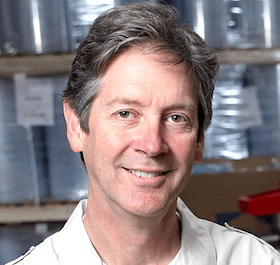Through the innovative practice of microbiome mining, scientists and researchers will be able to harvest and study microbiome molecules at an industrial scale for the first time. Life science is on the verge of ushering in the age of microbiome metabolomics, and it is possible to have a Moore’s law growth pattern that will double the known microbial small molecules every 24 months for years into the future.
Actionable understanding of microbiome molecules could lead to cures or treatments for rare and orphan diseases, neurodegenerative, inflammatory, metabolic, infectious, longevity, and more. Other industries will benefit from a deep understanding of the hidden small molecule world, like crop health in agriculture, sustainability challenges in carbon capture, protecting against red tides and harmful algal blooms, and coral bleaching.
Achieving these goals is possible by unlocking secrets in biology and chemistry that are nearly impossible to decode because the technology has yet to provide the information or the technology has not existed. The human microbiome, the least understood human organ, is a critical opportunity for advancing our understanding of small molecules.
Forty trillion microbes, which includes bacteria and fungi, mostly live in the digestive system and are called the gut microbiome. Current knowledge suggests that the microbes and the small molecules (metabolites) they produce have far-reaching implications for causing or fighting disease. For example, the gut microbiome makes ninety percent of the tens of thousands of mostly unknown small molecules that reach the bloodstream and can cross the blood-brain barrier, penetrate human cells, and even disrupt our DNA.
Traditionally, scientists rely on indirect methods, or the limited capability to grow microbes in the lab, to study small molecules. These approaches only scratch the surface of knowledge, yet play an outsized role in industries like drug discovery, where these methods have a hand in more than fifty percent of approved drugs. Only a tiny portion of naturally existing human drug-like small molecules are known, and these small molecules are the keys to turning biological processes on, off, up, or down. Ninety percent of all drugs on the shelf today are small molecules, the majority from natural sources either directly or indirectly.
Life science has made numerous resolution and amplification improvements over the last 100 years. A pivotal breakthrough came in genomics when the amplification of PCR (Polymerase chain reaction) allowed cloning the genetic material to a measurable quantity. PCR amplification ushered in the age of genomics and a wealth of technologies and understanding.
Microbes and their chemistry are elusive because less than one percent of microbes will grow in a culture, which has historically been the best way to amplify and understand. There are several significant barriers to obtaining microbes at the quality and scale needed to study the organisms and chemistry. Technology aiding the removal of barriers was supported by the Advanced Research Project Agency (ARPA) of the Department of Energy to the tune of $6.3 million from 2010-2012. Follow-on funding totaled another $15 million through government grants, and private investors facilitated advances in the technology to production scale and provided peer-reviewed proof of capabilities.
The improvement over existing technology is mind-boggling. Today’s best-in-class technologies allow finding and testing an unknown small molecule from an unculturable microbe which is equivalent to finding a quarter in a basketball court. Tomorrow’s technology could find that quarter in the state of Rhode Island representing nearly one million times current capabilities, putting the microbiome in the quantity and quality to investigate.
The technological improvement is achieved at a scale previously unimaginable. Typically, a sample of 100 ml would be considered a large sample for laboratory research at a benchtop scale. For industrial-scale microbiome mining, typically, it is more than 200 million times the size of a benchtop sample. This type of scale, when properly collected and preserved, allows amplification of the small molecules and, critically, the ability to test for activities and properties
Understanding the small molecules of microbiomes is humanity’s most significant opportunity to cure and treat disease, improve agriculture, find solutions for sustainability issues, and many more of the challenges in life science.
Ross Youngs is CEO and founder of Biosortia Microbiomics.








1 thought on “The Untapped Potential of Microbiome Mining in Drug Discovery and Precision Medicine”
Comments are closed.